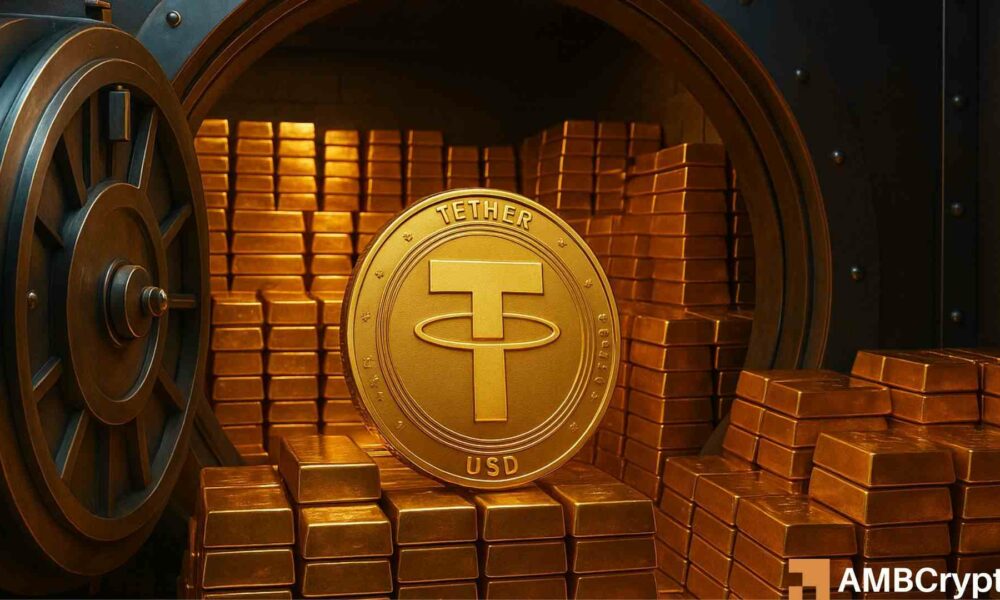Tether’s Strategic Move into Gold: The Future of Tokenized Assets
Tether, the leading stablecoin issuer globally, has recently made headlines for significantly increasing its gold holdings. Analysts suggest this move by Tether may signal a strategic positioning for an impending boom in the tokenized gold market. With Tether’s vault now showcasing approximately 116 tonnes of gold, it stands out as a prominent player, even rivaling smaller central banks such as Korea and Hungary. The surge in Tether’s gold accumulation, particularly noted during the third quarter of 2025, indicates a significant shift in the dynamics of gold demand beyond traditional finance.
Tether Surpassing Central Banks in Gold Demand
In the third quarter of 2025, Tether emerged as the top gold buyer, surpassing the demand from established central banks of countries like Kazakhstan and Brazil. According to the Financial Times, Tether has bought 26 tonnes of gold, catapulting it ahead of these traditional institutions in a market often dominated by central banks. Notably, this acquisition further solidifies Tether’s position as the largest holder of gold outside of central banks, according to investment bank Jefferies. The firm notes that Tether’s vault now rivals that of smaller central banks, which may be a game changer for both the cryptocurrency and gold markets.
Rising Demand for Tokenized Gold
Since gold has been part of Tether’s reserves backing its USDT stablecoin, the recent surge in the price of gold has fueled heightened demand for Tether Gold (XAUT), its tokenized gold offering. The data shows that in 2024, Tether’s gold demand fluctuated between 3 to 7 tonnes per quarter. However, this demand skyrocketed in 2025, peaking at 23.5 tonnes in Q2 and escalating to 25.9 tonnes in Q3. The significant price spike of gold, rising from $3,000 to $4,300, has likely encouraged this increased demand. Tether’s strategic pivot into gold may reflect a foresight that tokenized gold could gain mainstream acceptance akin to stablecoins.
Tether’s Vision: Tokenized Gold Going Mainstream
Analysts from Jefferies believe that Tether may be positioning itself in anticipation of tokenized gold becoming a mainstream asset class. Retail investors often face barriers when it comes to holding traditional gold ETFs due to high fees and minimum investment requirements. In contrast, Tether Gold and other on-chain gold versions, such as Pax Gold (PAXG), offer a more affordable and accessible alternative. This accessibility could significantly attract retail interest, particularly given that these tokenized options circumvent ETF restrictions that often discourage small investors.
Growth of the Tokenized Gold Market
The growth trajectory of tokenized gold has been notable, recently reaching a market supply of approximately $3.9 billion. This growth has seen Tether Gold and Pax Gold expand significantly, with Tether Gold increasing from under $1 billion to over $2 billion, and Pax Gold rising to $1.3 billion in the second half of the year. This momentum reinforces Jefferies’ assertion that on-chain gold is quickly gaining traction. However, the future path of this market remains uncertain as stakeholders await clearer regulations from the SEC regarding tokenized assets.
The Impact of Regulatory Clarity
As the landscape for tokenized assets continues to evolve, regulatory clarity will play a crucial role in shaping its future. Observers are keenly watching the SEC for guidance on how tokenized gold and similar assets will fit into the broader financial ecosystem. Ultimately, the extent to which Tether, alongside its competitors, can capitalize on the opportunities presented by tokenized gold may well depend on the regulatory environment that emerges in the coming months.
In summary, Tether’s strategic investment in gold marks a significant pivot not just for the company but for the evolving narrative of both the cryptocurrency and gold markets. As it stands, Tether’s substantial gold holdings open doors to new opportunities, potentially paving the way for a broader acceptance of tokenized assets. With an emphasis on accessibility for retail investors, the landscape for tokenized gold appears poised for further growth—provided that regulatory frameworks support innovation while ensuring market integrity.


